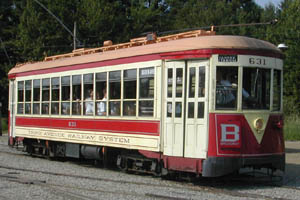
Matthew D. Cosgro
- Builder
- Third Ave. Ry. Co.
- Description
- Lightweight
- Secondary Use
- None
- Type
- City and Suburban Streetcars
- Year
- 1939
- Retired from Service
- 1980
- Acquired by the Museum
- 1981
- Note
- No. 631 is stored indoors needing both mechanical and cosmetic repairs.
- Fund
- 864
Third Avenue Ry. System 631
From New York, New York
History
The Third Avenue Railway System (TARS) operated streetcars in the New York City boroughs of Manhattan and The Bronx as well as the adjoining suburbs of Mount Vernon, New Rochelle and Yonkers. In Manhattan, another company, New York Railways, also operated streetcars but on different streets. The city prohibited overhead trolley wires in Manhattan. So, trolleys used a third rail in underground conduits. New York Railways converted its lines to buses by 1936, but TARS chose to acquire new equipment to keep operating streetcars in the 1930s. Because TARS was not allowed to raise its nickel fare, it could not afford to buy new streamlined PCC cars which other operators starting buying in 1936. Instead, between 1934 and 1939, TARS built or rebuilt 335 lightweight streetcars in its main shops at 3rd Avenue and 65th Street. No. 631 was among the last group of cars built in 1939. Similar to PCC cars, the 1939 TARS trolleys included rubber mounted trucks and rubber cushioned wheels for a smoother, quieter ride. Other special features were dynamic braking in addition to air brakes, and a foot-pedal operated brake valve. Nos. 626-645 ran on the 59th Street crosstown line. The city soon mandated conversion to bus operation. After a delay due to World War II, TARS ended trolley operation in New York City in 1948. Trolleys continued in Yonkers, NY until 1952.
After the war, using Marshall Plan funds, Vienna, Austria acquired 40 of the TARS lightweight cars, including No. 631. Vienna refitted the cars with pantographs and renumbered No. 631 to No. 4216. These cars received a red and white paint scheme in place of their original red and cream colors. Vienna used the TARS cars on single track suburban lines because they were too wide for the double track city lines. The former TARS streetcars ran in Austria from 1949 until 1969.
By 1970, Vienna had scrapped most of the former New York cars, leaving 14 in storage and available for sale. In 1972, Seashore purchased Vienna No. 4216 but was not able to raise the $15,000 cost to pay for transporting the car to the U.S. The car remained stored in various carhouses in Vienna. After intervention by the Austrian Consul General in New York, the Vienna Transport System agreed to store No. 4216 until May 31, 1981. Eventually, John Silber, President of Boston University, agreed that the university would pay the transportation cost so that BU could lease No. 4216 for a shuttle service on a portion of Boston’s Green Line along Commonwealth Avenue, supplementing the regular MBTA trolley operation. BU and the MBTA could not finalize a shuttle plan by Vienna’s deadline, but Seashore was able to borrow funds to pay the shipping cost. No. 4216 came to Kennebunkport in 1981. By 1983, BU and the MBTA decided that the shuttle plan would not be feasible. Since BU did not use the trolley, it was not obligated to pay the transportation cost, but it agreed to give the museum $7,000, and Seashore repaid the rest of the loan through fund-raising efforts.
In 1983, Seashore began restoring the car to its New York configuration. Vienna’s track gauge was 5/16” too wide for Seashore’s standard gauge. So, in 1992, No. 631’s trucks went to the Bangor & Aroostook Railroad shops at Derby, ME for re-gauging. Seashore completed the restoration and placed No. 631 in regular service in 1995.
Technical Information
- Seats: 46
- Control: K-35 (LB)
- Brakes: Self Lapping
- Compressor: CP-27
Trucks
- Number: 2
- Manufacturer: Brill
- Model: 77E
Motor
- Number: 4
- Manufacturer: Westinghouse
- Model: 510A
Weight and Dimensions
- Length: 42’ 7.00"
- Width: 8’ 4.00"
- Height: 11’ 4.00"
- Weight: 37540 lbs.
Additional Images
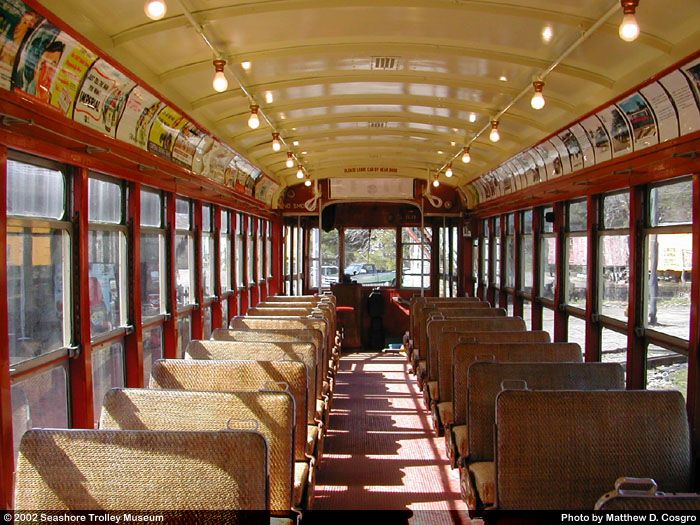
Matthew D. Cosgro in 2002
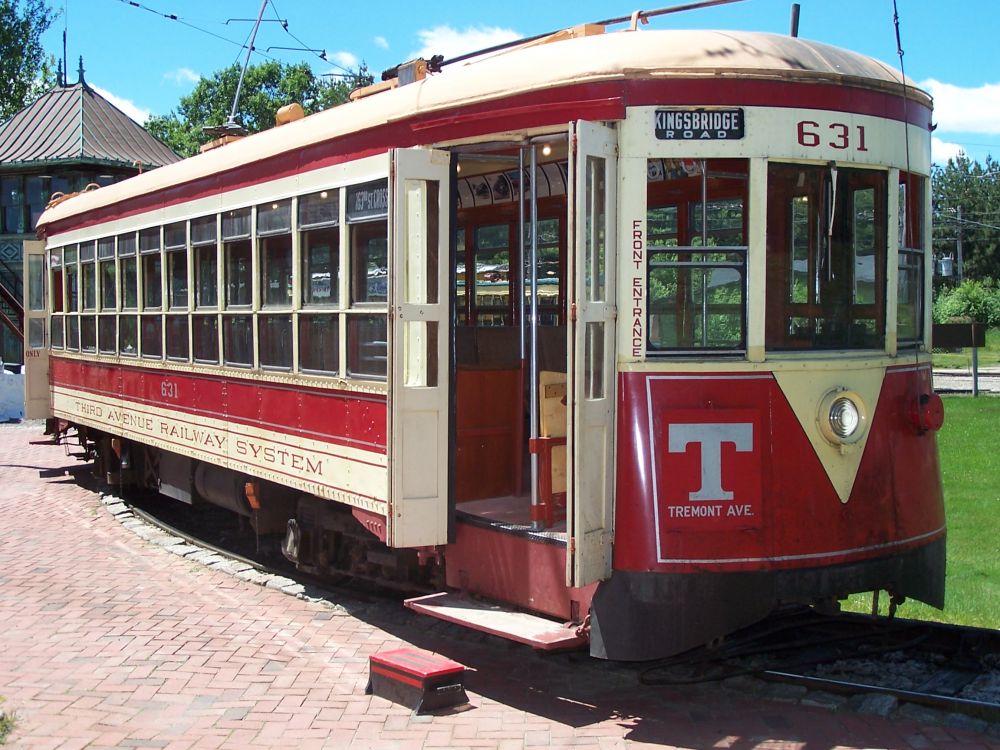
Seashore Trolley Museum Collection on 06/20/04
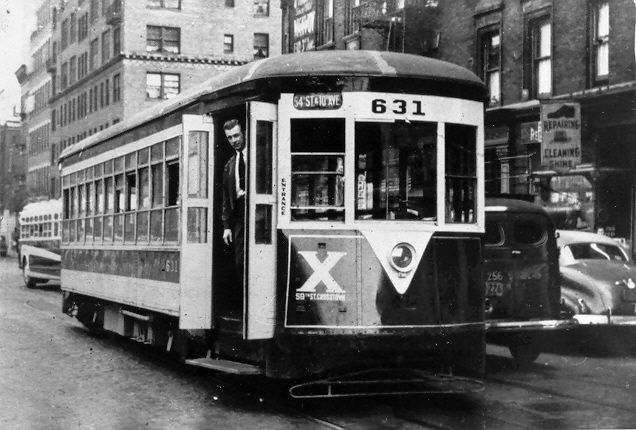
Jim Shantz Collection
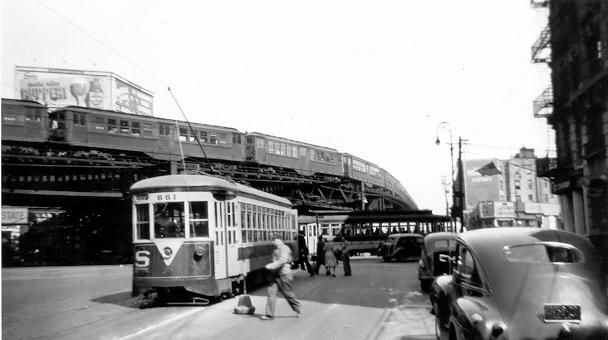
Jim Shantz Collection
© 1998 - 2025 New England Electric Railway Historical Society. All Rights Reserved.